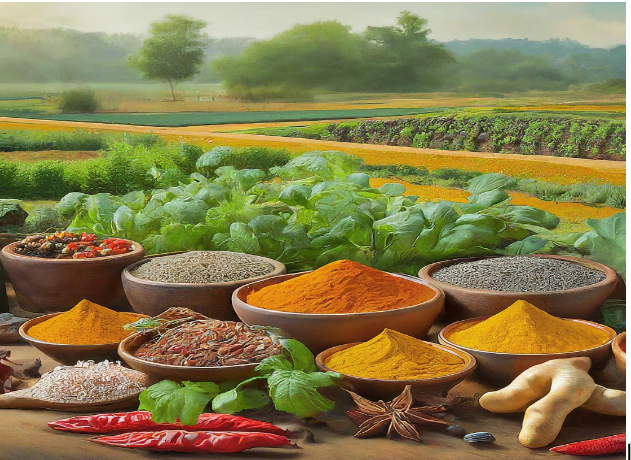India’s broad utilization of flavors originates from both culinary and helpful beginnings. Customary practices like Ayurveda have used complex zest mixes for a really long time to treat endless medical issues. Past adding energetic flavor, the phytochemicals in fragrant Indian flavors confer restorative impacts affirmed by current science.
Most flavors utilized in Indian cooking, similar to turmeric, ginger, garam masala, have high convergences of antimicrobial, calming, cell reinforcement compounds demonstrated to mend different problems. A few perfect representations:

Turmeric:
The golden brilliance and unique flavor of turmeric dominates Indian curries. Its key compound curcumin shows cell reinforcement, antibacterial, calming, antidiabetic, liver defensive impacts. Research shows curcumin hinders cell flagging pathways that drive persistent infections like malignant growth. It additionally crosses the blood-mind obstruction to moderate neurodegenerative infection pathogenesis through various instruments like restricting amyloid plaques and constricting microglial initiation.
Garlic:
Garlic is antiviral, antifungal, malignant growth defensive and acquires huge decreases in coronary illness risk markers like superior lipid profiles and pulse guideline. Key sulfur compounds in garlic like allicin exert these protective effects by acting against pathogenic enzymes and boosting antioxidant activity.
Ginger:
A staple in Indian kitchens, ginger possesses a gold-mine of pharmacological effects from its humble root. Gingerols, shogaols and other volatile oils confer anti-inflammatory, anticancer, anti-diabetic and antimicrobial properties. Ginger tackles physiological inflammation underlying chronic inflammatory disorders like arthritis, hypertension, neuropathy and aids cancer-protective cellular changes through multimodal influence on cell signaling proteins and immune responses.
Clove:
The dried flower buds of clove contain oleanolic acid, tannins and other compounds with remarkable analgesic, antifungal, antibacterial and anti-inflammatory properties proven through in vitro and human trials. Clove oils are used in dental care for their therapeutic effects against oral bacteria responsible for tooth decay and gum disease. Their antiemetic action also relieves nausea and vomiting.
Cumin:
Cumin seeds exhibit antibacterial activity against several drug-resistant pathogens confirmed through clinical studies. Key constituents like cuminaldehyde and limonene demonstrate bioactive efficacy as enzyme inhibitors, immuno-modulators and antioxidants – effectively combating metabolic, inflammatory and oxidative stress damages involved in diabetes, asthma, cardiovascular disorders, etc.
The Takeaway:
In essence, Indian spices encompass a treasure trove of phytochemical ingredients that modern medicine has only scraped the surface of so far. Their antioxidant potency is pound-for-pound unmatched by any other food groups. Compelling scientific evidence and Ayurvedic wisdom spotlights that regularly incorporating these powerful spices constitutes a protective, side-effect-free therapeutic strategy for staying healthy.
For more information on wellness and yoga, keep visiting www.zenaurayoga.com
